Today's US inflation reading came in roughly in line with expectations, marking the first U.S. inflation reading this year that didn't surprise to the upside. However, today's inflation report does not indicate that the situation has changed dramatically from previous readings, although there is a "glimmer of hope". This hope stems from falling prices of used cars and a continued decrease in the contribution from the real estate market. Let's take a look at the report details:
Continued Moderate Decline in Core Inflation
Start investing today or test a free demo
Create account Try a demo Download mobile app Download mobile appCore inflation is slowing to 3.6% year-over-year as expected, while on a monthly basis, it shows a rise of 0.3% month-over-month, also in line with expectations. In this regard, the Fed can be satisfied, although core inflation still remains too high to consider a longer cycle of interest rate cuts.
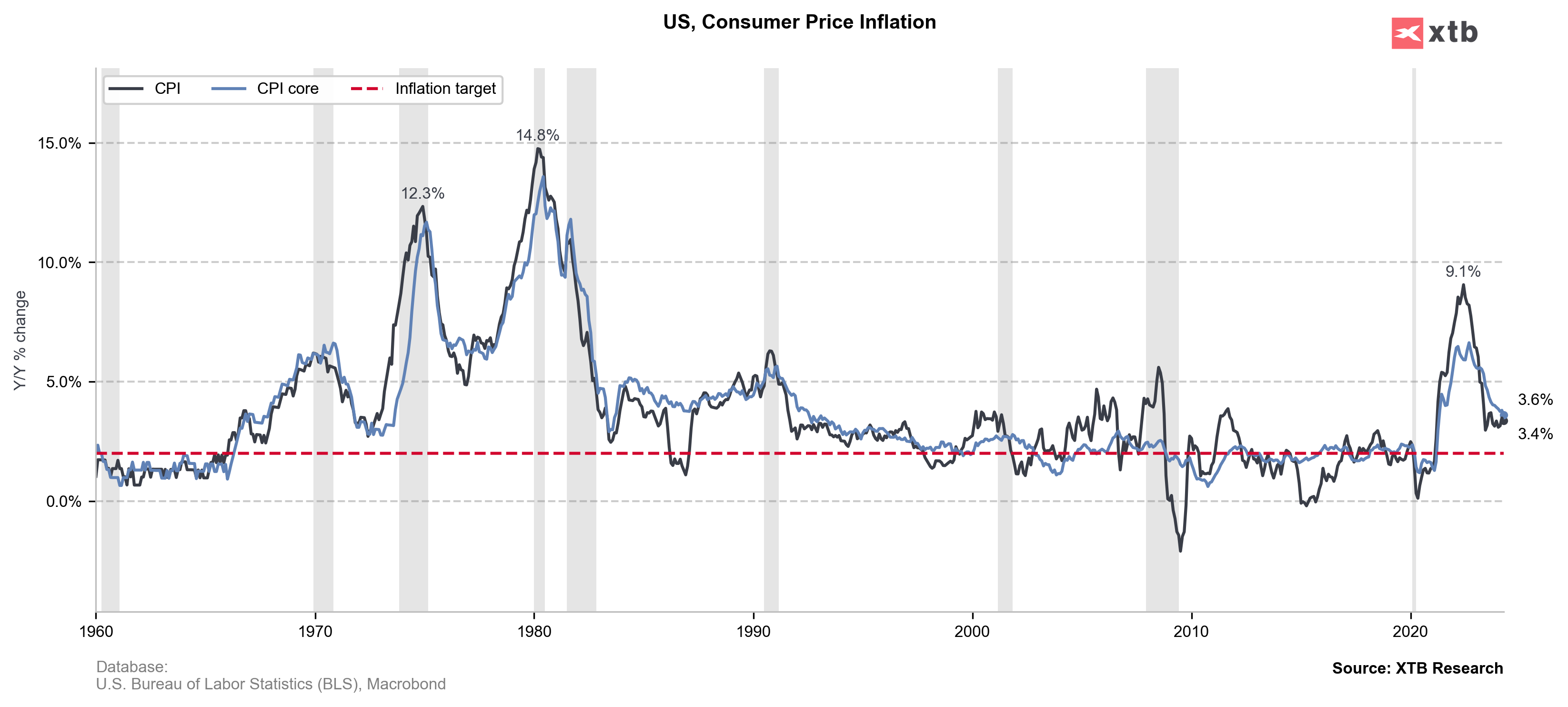
Source: Bloomberg Finance LP, XTB
Drop in Used Car Prices Saves Lower Inflation Reading
Looking at the inflation contributions chart, we can see that the negative contribution from used cars stands out at first glance. In the previous two readings, this contribution was minimal, but now it has resulted in a lower headline inflation reading of 3.4% year-over-year. Without the drop in car prices, we would have observed inflation staying at 3.5% year-over-year.
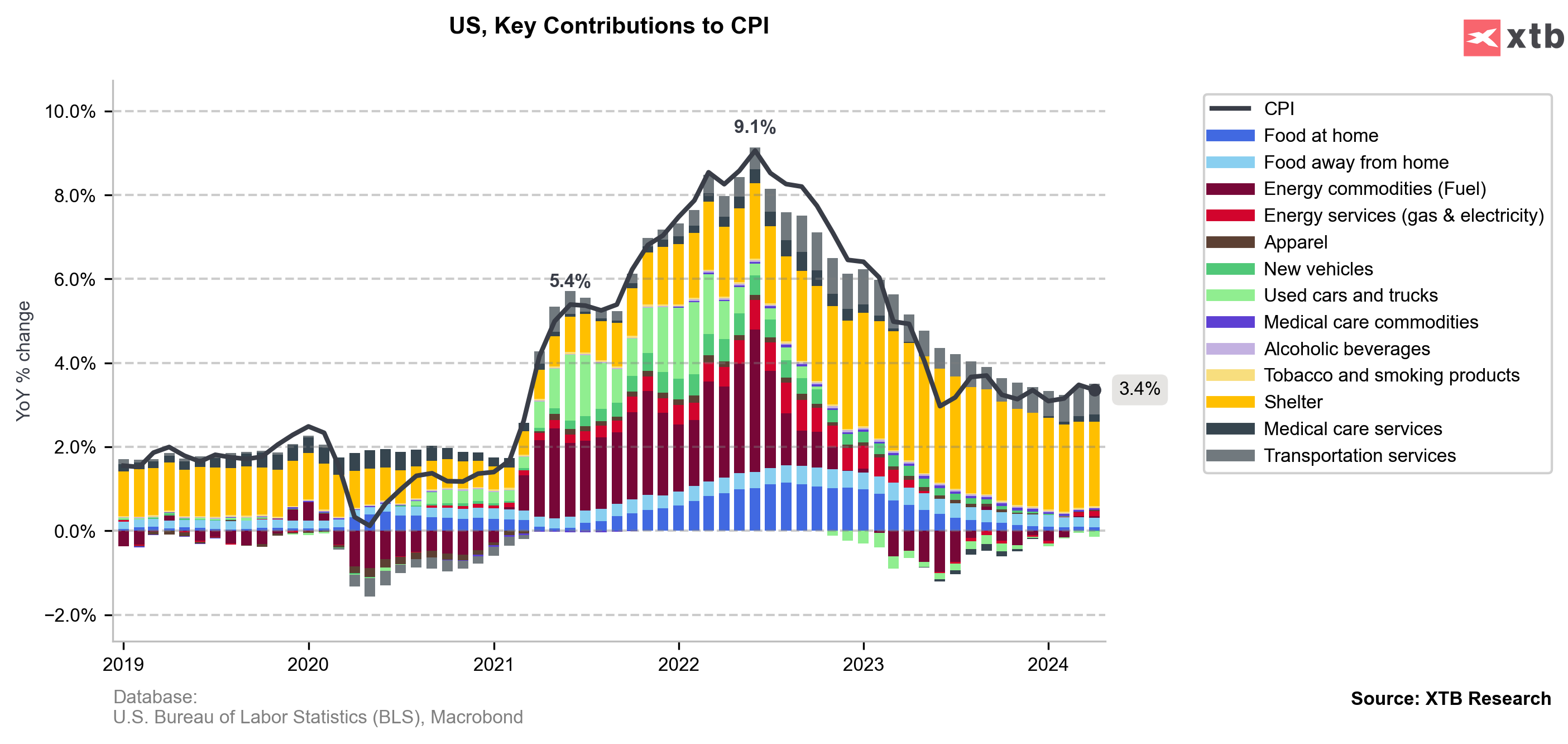
Source: Bloomberg Finance LP, XTB
It is worth noting that the Manheim Used Vehicle Value Index, which shows inflation changes with about a two-month lead to CPI data, had long suggested that a deeper drop in car prices is coming in the inflation report. After several months of consolidation, we see a bigger drop in prices that may continue in the coming months.
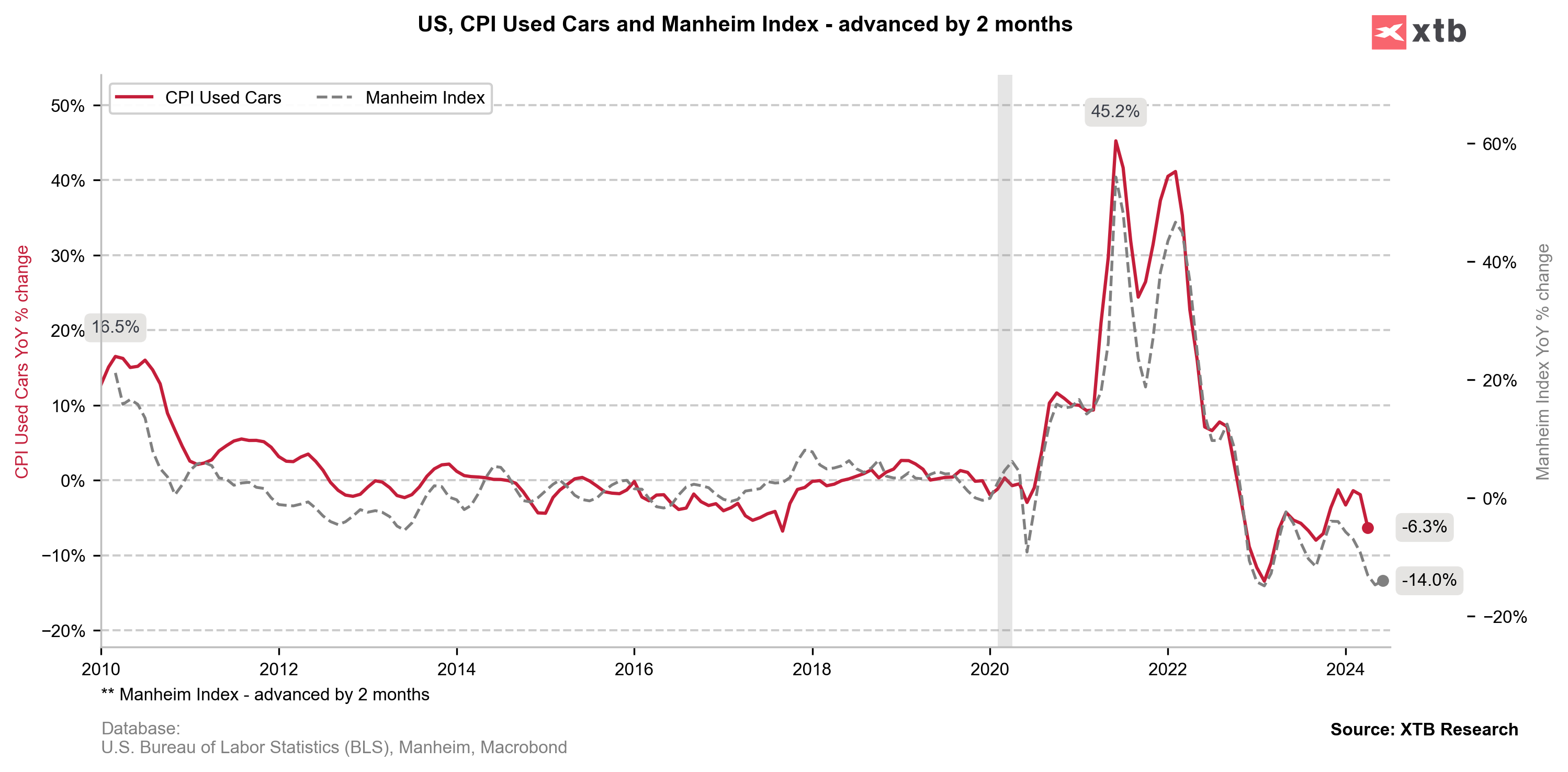
Source: Bloomberg Finance LP, XTB
Shelter remains the top contributor
In annual inflation, rents accounted for as much as 2 percentage points of inflation. A significant contribution also comes from transport services, which can be somewhat linked to higher fuel prices that also positively contribute to inflation. There is also a rebound in the contribution from utilities and medical services.
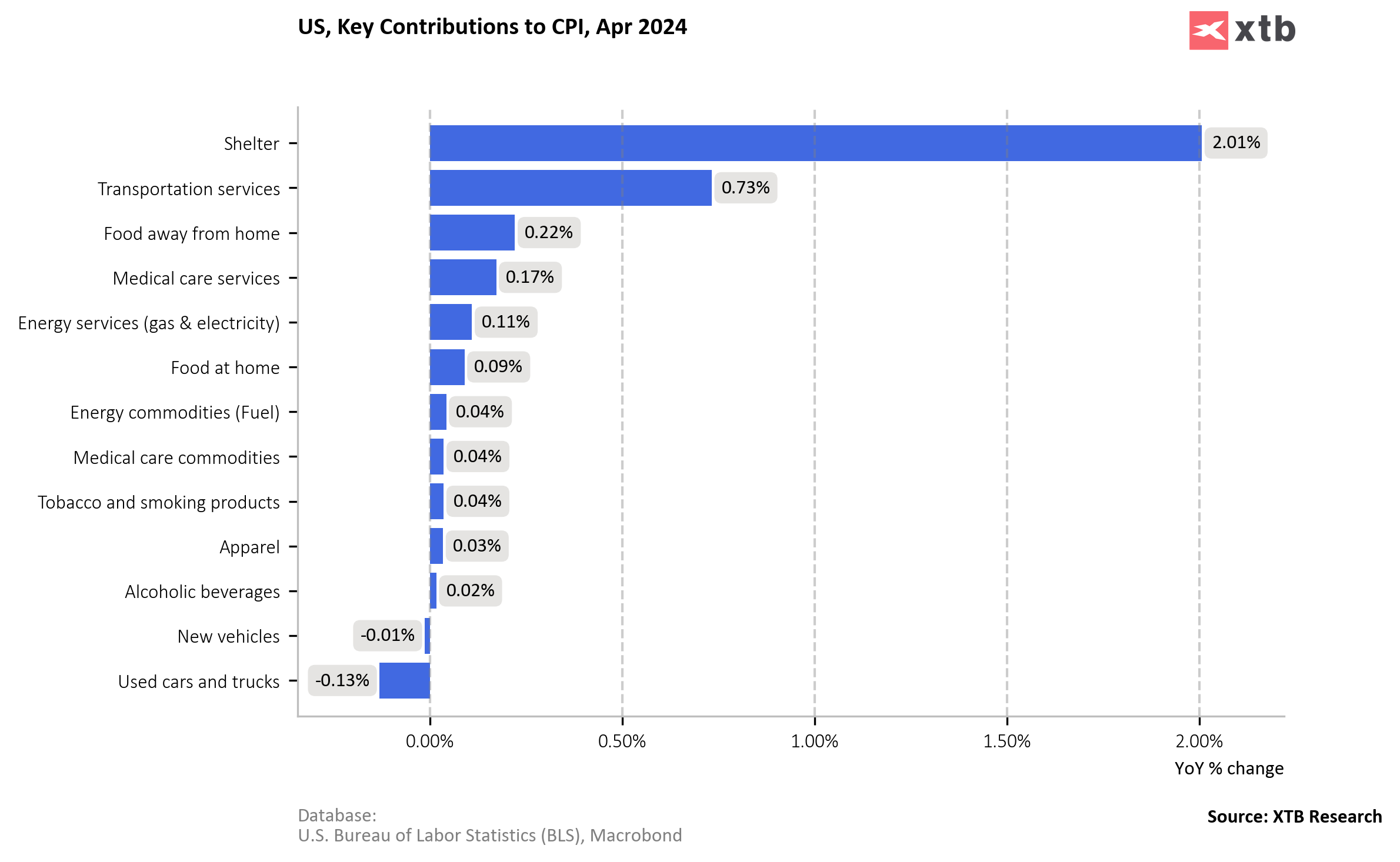
Source: Bloomberg Finance LP, XTB
The Case Shiller report still suggests a decrease in the contribution of rent inflation, but it is evident that this will only last for a few more months, after which we will observe a rebound.

Source: Bloomberg Finance LP, XTB
Is This the End of the Service Inflation Rebound?
At one point, we observed a drop in service inflation excluding rents below 4%. Later, however, it rebounded significantly. Now, however, the reading is rising only from 4.8% to 4.9% year-over-year. This is, of course, a positive sign, although one inflation report should not change the Fed's decisions.
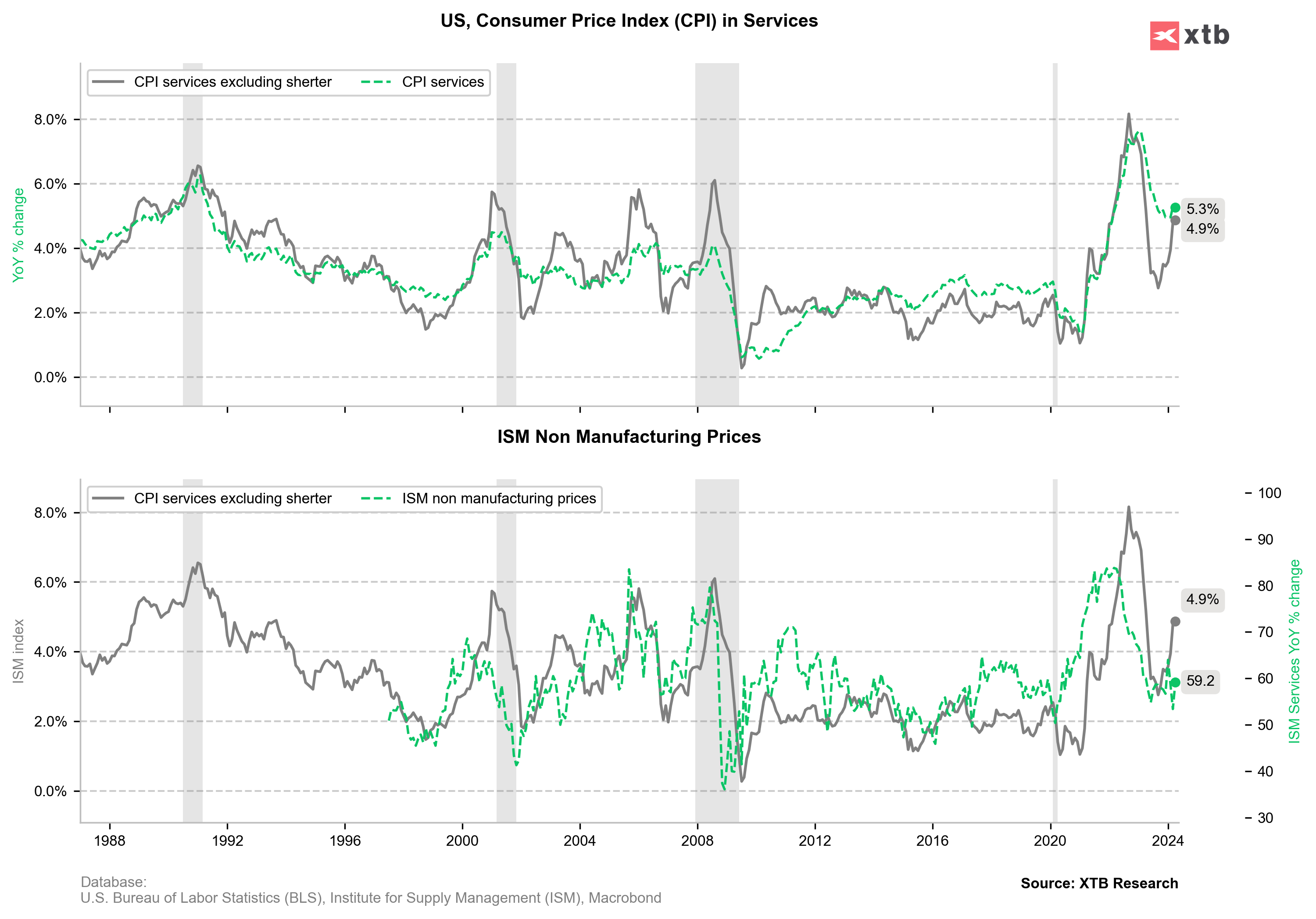
Source: Bloomberg Finance LP, XTB
What Does the Report Mean for the Fed and How Did the Market React?
The reading is certainly something the Fed has wanted to see since the beginning of the year. Inflation didn't surprise on the upside, core inflation continues to decline, and service inflation isn't as frightening. This, of course, does not change the situation regarding rate cuts for now. The Fed needs to see signs of further decline, and at the moment, we simply have a slowdown or halt in the rebound that has occurred since the beginning of this year. Additionally, it is worth watching energy prices, which have been surprising this year, and a period is approaching in which oil and gas prices may see seasonal gains.
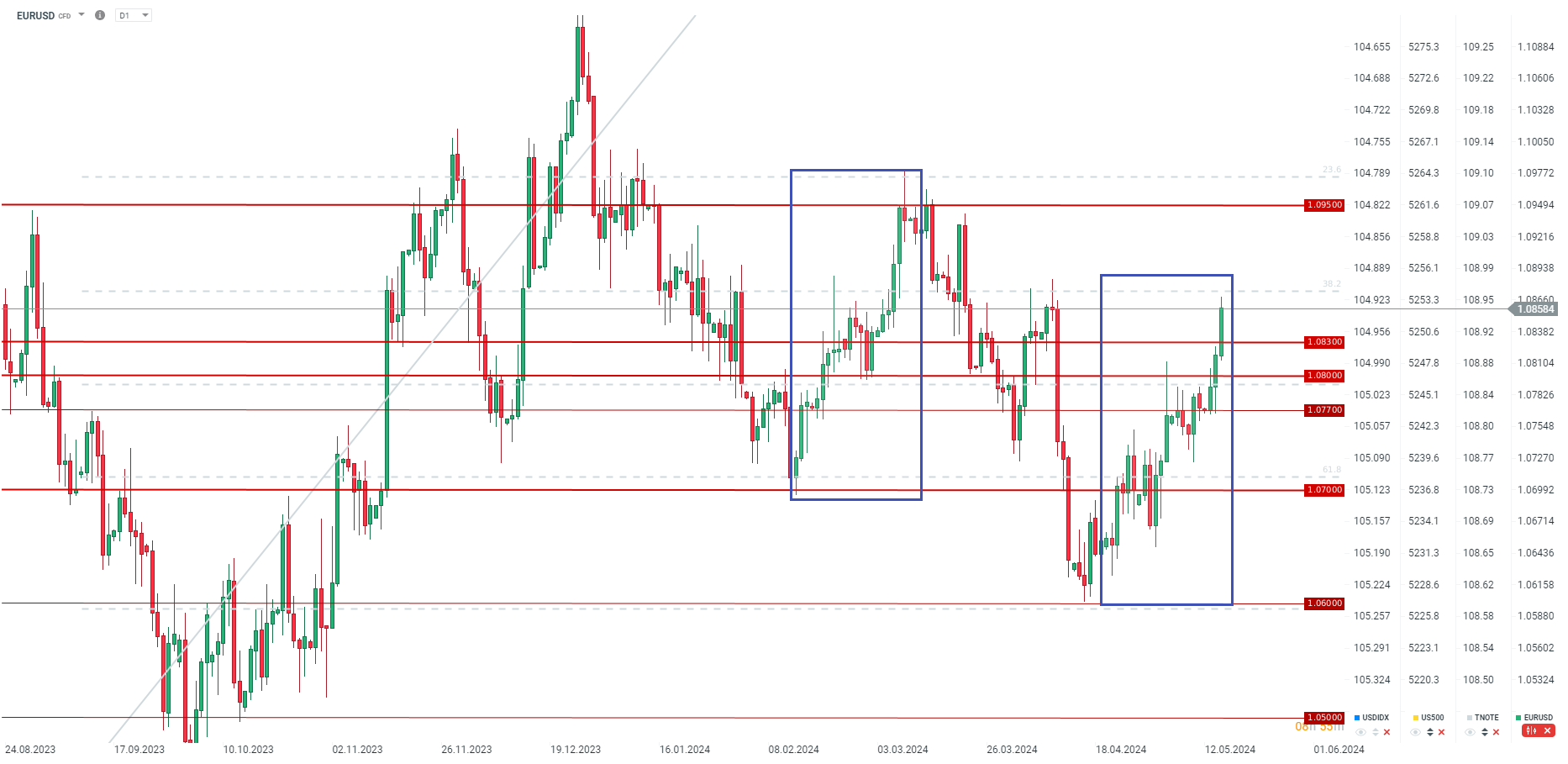
EURUSD is experiencing a significant jump today, continuing the upward movement that started in mid-last month. If EURUSD was to match the largest correction in the downtrend that began in December, then EURUSD could potentially test the 1.0900 area. However, it is worth remembering that a possible ECB rate cut is ahead in June, possibly followed by another move in July, which could weigh on the European currency. Source: xStation5
